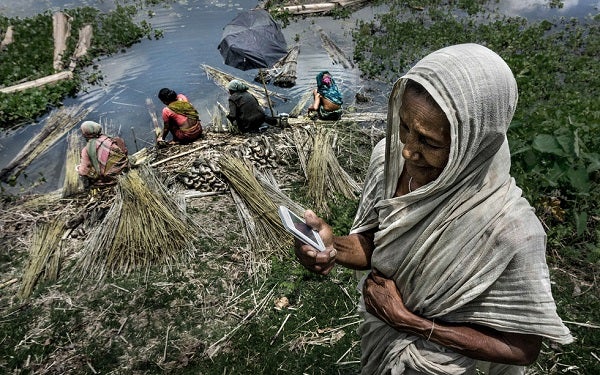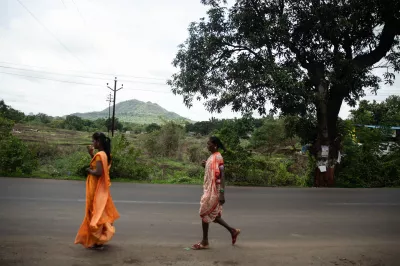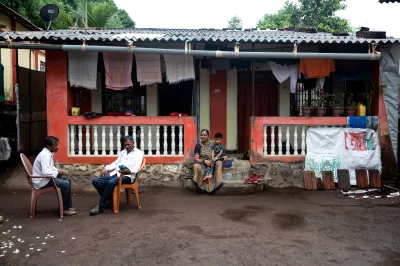Four Ways to Boost the Impact of India’s Direct Benefit Transfers
The Indian government aims to create a digital payment connection with every Indian household. Once the build-out of this payment connectivity is complete, citizens will no longer have to go through a local official to access their social welfare transfer or pension payment. They will receive their money, in full, directly into their account. The government is also using these payment connections to convert fuel, food, and other price subsidies into digital cash payments.
These Direct Benefit Transfer (DBT) reforms will result in a big increase in cash payments flowing to Indian citizens. As the DBT rollout proceeds, we need to ask ourselves how these payment flows can be structured and combined with other interventions to help pull people out of poverty.
To answer this question, let’s think through the experience of a hypothetical DBT recipient named Rano. Rano lives in a remote village, has a family of five and has multiple sources of income from work as agricultural laborer, from the national rural employment guarantee scheme, and remittance income from her husband working in a city. She receives two social transfers and two price subsidies from the government.

Photo Credit: Sujan Sarkar
As we think about how to design India’s DBT programs in a way which maximizes their impact on Rano’s life, the emerging evidence on behavioral economics and cash transfers gives us four guiding principles:
Principle #1: Make Rano’s life simpler
In their seminal work on scarcity and mental bandwidth, Sendhil Mullainathan and Eldar Shafir challenge long-held thinking that people become poor because they make bad or irrational decisions. Instead, they find that people make bad decisions because they are poor. Think of the stress, time, and effort Rano must expend trying to navigate four anti-poverty programs, dealing with looming expenses, and juggling multiple income streams. All of this reduces Rano’s ability to plan and make long term decisions to benefit her family. So, to begin with, we should consider consolidating some social transfers and subsidy payments into a single transfer, rather than converting each program into its own, distinct payment.
Principle #2: Unconditional transfers provide a nice foundation, on which we can layer targeted conditional cash transfers
Several randomized control trials (RCTs) demonstrate that targeted conditional cash transfers (CCTs) are a cost-effective way of achieving certain, targeted outcomes. But they aren’t appropriate for all segments. After a comprehensive review of the evidence around cash transfers, Berk Ozler of the World Bank suggests that an unconditional cash transfer (UCT) can provide a critical foundation, on which policymakers can layer carefully designed, targeted CCTs to encourage specific outcomes, such as education or health behaviors. Hence, the Indian government should consider consolidating multiple payments into a single, monthly, unconditional transfer. We could extend this UCT to all poor households in India, creating a foundation on which to layer targeted CCTs and other anti-poverty programs.
Principle #3: Cash transfers do not, on their own, provide a pathway out of poverty
Several RCTs demonstrate that cash transfers are an effective, low-cost social protection tool, but they don’t, on their own, move people out of poverty. For that, you also need health, education, job training, and other programs. The BRAC-inspired “Graduation” programs, tested in six countries, give us a glimpse of the type of integrated development intervention that could complement the UCT/CCT foundation that is described above. By providing a comprehensive set of products and services to households, some financial, along with a substantive productive asset, training, and consumption support, these programs generate lasting effects on consumption and asset values even for the poorest of the poor.
Of course, compared to less comprehensive interventions, the Graduation program has high up-front costs. The Indian graduation program, for example, cost $330 per household. This appears quite large but this is a one-off intervention, whereas many anti-poverty programs are never-ending. That makes graduation programs cheaper than many alternatives.
Principle #4: We can boost the welfare impact of India’s DBT programs by linking them with automated defaults and other nudges
We can boost the welfare impact of India’s DBT programs by linking them with automated defaults and other nudges. Several RCTs from the US and Europe find that automatically enrolling employees in 401K and other pension programs dramatically increase pension savings (relative to asking people to “opt-in” to those plans). Madrian and Shea (2000), for example, find that setting automatic enrollment in 401(k) plans as the default option led to a 50% increase in participation.
Why can’t we apply the same behavioral nudges to India’s DBT programs? For example, what if Rano received a simple message on her phone, which says:
- Click 1 to direct 10% of your monthly UCT payment into your long-term education or pension account.
- Click 2 to direct 15%
- Click 3 to direct 20%
With one click, Rano could start to build long-term savings without having to muster the willpower to save each and every month.
India’s DBT reform could serve as a powerful platform for improving its anti-poverty programs. At the foundation, we believe that interventions like this may help the poor lead healthy and productive lives. The task now is to determine how to leverage this platform to maximize its impact on India’s poorest.




Add new comment